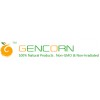Neohesperidin Dihydrochalcone
- FOB Price:Get Latest Price >
- Min.Order:1 Vial(s)
- Payment Terms:L/C
- Favorite
Business Type:Manufacturer
Country/Region:China
Ddu Verified
HOT Rank


Sichuan Gencorn Bioengineering Co., Ltd
We are professional supplier of Citrus aurantium extracts and derivatives,Other natural plant extracts and derivatives, Tibetan medicines.
Business Type:Manufacturer
Country/Region:China
Ddu Verified
HOT Rank

Product Name:Neohesperidin Dihydrochalcone | SYNONYMS:NHDC |
EINECS:243-978-6 | CAS Registry Number:20702-77-6 |
Molecular Formula:C28H36O15 | Molecular Weight:612.58 |
Density:1.61g/cm3 | Appearance:white powder |
Usage:Sweetening agent, especially in chewing gum and dentifrices | |
Herb Source:The dried immature fruit of citrus aurantium L which belong to rutaceae (small dried sweet orange) | |
Description:Neohesperidin Dihydrochalcone (NHDC) was discovered during the 1960s as part of a United States Department of Agriculture research program to find methods for minimizing the taste of bitter flavorants in citrus juices. Neohesperidin is one such bitter compound. When treated with potassium hydroxide or another strong base. and then catalytically hydrogenated, it becomes NHDC, a compound roughly 1500-1800 times sweeter sugar at threshold concentrations; around 340 times sweeter than sugar weight-for-weight. Its potency is naturally affected by such factors as the application it is used for, and the Ph of the product. Like other highly sweet glycosides, such as glycyrrhizin (from the licorice root) and those found in stevia, NHDC’s sweet taste has a slower onset than sugar’s and lingers in the mouth for some time. Unlike aspartame, NHDC is stable to elevated temperature and to acidic or basic conditions, and so can be used in applications that require a long shelf life. NHDC itself can stay foodsafe for up to five years when stored in optimal conditions. The European Union approved NHDC’s use as a sweetener in 1994. It has not been approved as a sweetener in the United States. It is sometimes said that NHDC is considered a Generally Recognized as Safe flavour enhancer by the Flavour and Extract Manufacture’s Association, which is a trade group with no legal standing. NHDC has never appeared on the FDA’s GRAS listing. It is particularly effective in masking the bitter tastes of other compounds found in citrus, including Limonin and Naringin. Industrially, it is produced by extracting Neohesperidin from the bitter orange, and then hydrogenating this make NHDC. | |
